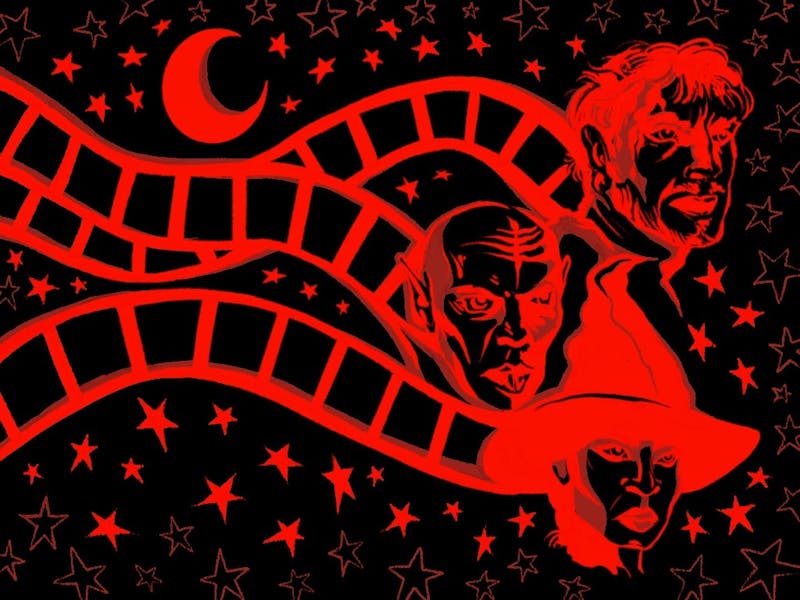A crew of talented thieves. An unbreakable vault. 24 years. $7 million in bonds. One heist.
Netflix's Kaleidoscope is a show that viewers will not want to miss. The eight episodes, cleverly labeled as colors rather than numbered in a sequence, reveal different pieces of the story's jigsaw puzzle built of greed, corruption, heartbreak, and betrayal. Just like a kaleidoscope reflects light in different ways to present different images, the series' episodes can be watched in any order to reveal a different plot line.
According to Netflix, this “non-linear approach to storytelling” aids in “building intrigue and suspense uniquely, with Netflix members each having a different immersive viewing experience.”
If you and your family members have separate Netflix accounts, odds are the platform will have randomly generated a different order for each of you. If you follow the one “rule” suggested by Netflix and leave the episode “White” (the heist itself) to last, there are over 5,000 possible combinations of the colored episodes.
Kaleidoscope is Netflix’s first attempt at this type of storytelling, with the non-linear strategy revealing key elements of information at different times for each viewer. One Netflix member may watch an episode that takes place 2 weeks prior to the heist before the episode that takes place 24 years prior to the heist. Others, however, may know the character's backstory before they even begin the present timeline. The chronology of this series is what makes the show so fascinating, transcending the story beyond that of a traditional “heist show”.
Actress Tati Gabrielle, who plays Hannah Kim in the series, explains how this storytelling structure will impact audiences.
“It starts conversations,” Gabrielle tells Inverse. “Everybody will see something in a different light. To me, it offers the opportunity for new and different perspectives and enriches that conversation.”
Actor Giancarlo Esposito, AKA heist leader Ray Vernon, agrees with Gabrielle, explaining how the series’ unique style will keep the audience on the edge of their seat.
“I think it allows [viewers] not to be in their comfort zone. When we watch things, we kind of have an idea of how it’ll turn out, how it’ll end, what’s going to happen, so I like the idea of being taken out of your comfort zone,” Esposito says in conversation with TV Line. “I think the randomized order allows your brain to be purposefully scrambled a bit, so that you’re paying more attention.”
Although this is certainly true, and there are plenty of elements to be balanced in the storyline, this style also comes with its own faults. Due to the inherently independent nature, each episode must take on in order to be watched at any point, and a lot of repetitive explanation occurs. At the beginning of most episodes, for example, a voice-over will cover relevant material to what is about to occur. This is mostly due to the fact that some viewers will simply not yet know vital information yet. If they haven’t watched a certain episode, there is no way to know what has happened. Because of the show's nature, however, some viewers will have just watched an episode that is now being detailed in the voice-over. This has bothered some viewers, who find the episodes to be over-explanatory.
Whether this repetitive nature impacts the overall success of the series or not, the episodes accomplish their goal of becoming independent of each other, enabling viewers to watch them in any order while still gauging the overall plot line of this heist story.
And it isn’t too difficult, especially with the popularity of heist narratives in today’s culture. From Oceans Eleven to Money Heist, a fictionalized crew taking on an impossible challenge for the ultimate reward is a story arc we are all fascinated, by but very familiar, with. Among these frequent narratives, however, Kaleidoscope brings in a fresh take.
The plot line of the Netflix series stems from a real case. The story is loosely based on the true event that occurred in 2012 on Wall Street.
“After Hurricane Sandy, $70 billion in unregistered bearer bonds were flooded and lost,” Showrunner Eric Garcia says, explaining the origin story of his series. “My first thought upon reading all these things was, 'Oh, someone made off with $70 billion and is using Hurricane Sandy as, like, a really good excuse.”
So, even though the characters and plot line is fictional, the circumstances revolving around the disappearance of money during a natural disaster are not imaginary at all.
When the final episode wraps, viewers are left with a twist that stems from the conversation between the show's father and daughter duo: Ray Vernon and Hannah Kim. Their relationship is a line that strings throughout the 24 years this series stretches over, and is a complicated web that pushes several characters to make key decisions. Hannah, for example, is essential to both assembling and dismantling the plan for the heist. She also serves as a strong motivator for Ray, as the series focuses on their estranged relationship in the present time, but their close bond less than a decade prior. Ray spends the majority of the series working to strengthen their connection once again.
The ending is satisfying because it comes back to the relationships at the heart of the series, and leaves viewers with a very unexpected answer to the driving question behind the show: “Will they make it out with the money?”



